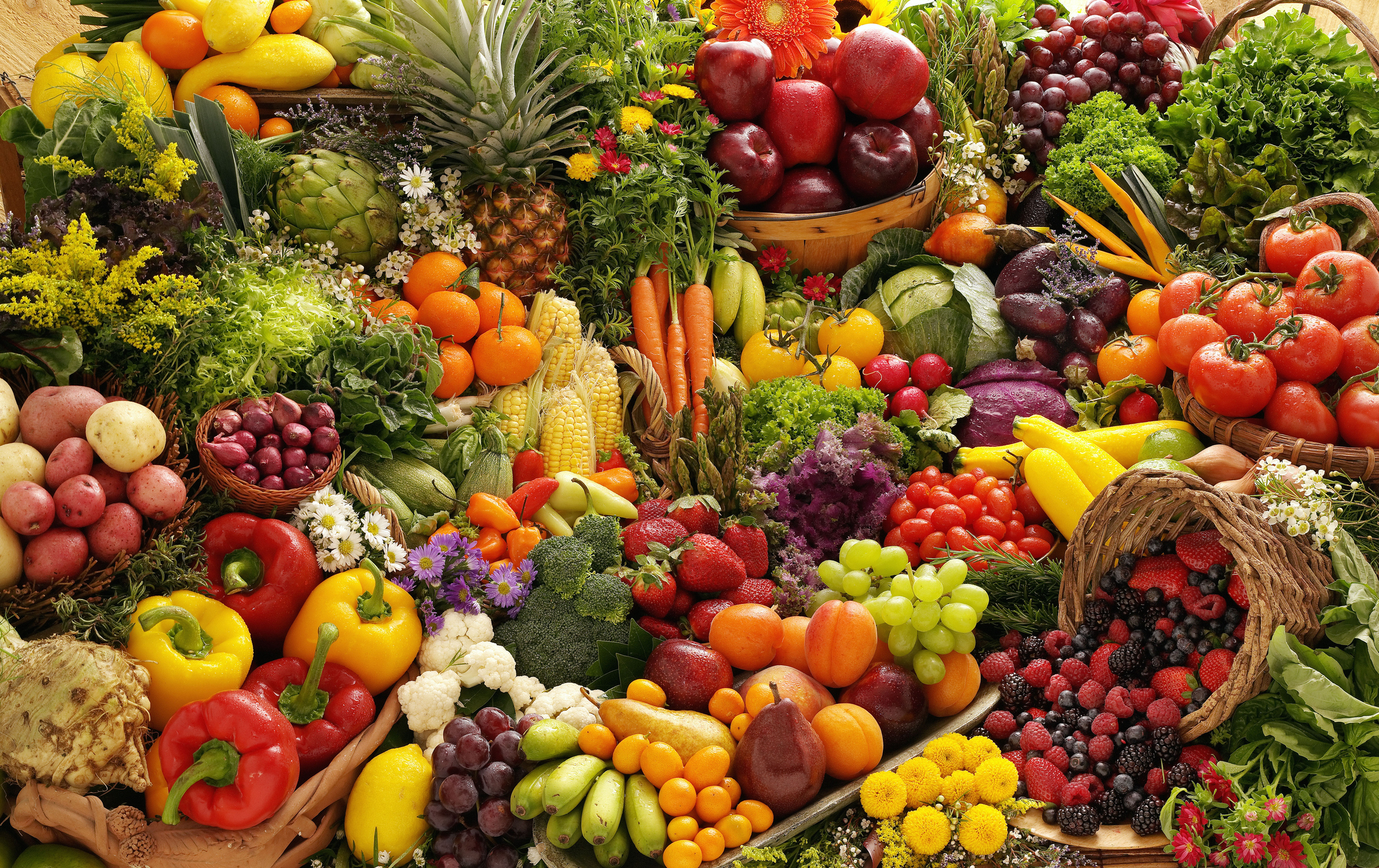One of the main reasons nutritional experts so strongly recommend eating a plant-heavy diet is that so many of the plant-based foods we eat contain phytochemicals (the prefix “phyto” refers to plants). Sometimes called phytonutrients, these are substances that help protect plants from insects, viruses, sun damage, and other hazards. They’re also what give so many fruits and vegetables their distinctive colors…the bright orange of a carrot, the deep red of a pomegranate seed…the sunny yellow of a summer squash.
But phytochemicals don’t just make our food pretty, and they’re not only helpful to the plants. When we consume the phytochemicals in food, they fight inflammation and oxidative stress, helping to protect us against a host of diseases. In fact, the potential benefits for which phytochemicals have been studied and shown promise reads like a wish list for health and longevity…besides the reduced inflammation and oxidative stress already mentioned, phytochemicals may prevent DNA damage and impact DNA repair, promote the death of cancer cells, increase the body’s immune function, and slow the growth of cancer cells. The more phytonutrients we eat—and the more varied our menu of phytochemical-containing foods—the better. That’s why nutritionists encourage people to make their meals look colorful. A rainbow of foods suggests that you’re getting a healthy array of protective, inflammation-busting phytochemicals.
Phytonutrients number in the thousands, with more constantly being discovered and studied. The following groupings and phytochemical examples merely scratch the surface of what can be found in everyday, easily accessible, foods.
Flavonoids
This enormous group of phytochemicals encompasses several large subgroups, including flavonols, isoflavones, and anthocyanins. There are all flavonoids, and are associated with a lower risk of a host of diseases and conditions.
The flavonol subgroup has been linked to lower risk of heart disease, stroke, dementia, and diabetes, thanks largely to its anti-inflammatory properties. Flavonols can be found in tea, leafy green vegetables, cruciferous vegetables such as broccoli and cauliflower, berries, apples, grapes, and citrus. And good news if you’re a lover of chocolate…the cocoa from which dark chocolate is made is packed with flavonols. To reap its benefits, though, you’ll need to steer clear of milk chocolate and instead consume, in moderation, chocolate that’s at least 70% cocoa. In a 2022 Harvard-led study, people who took cocoa supplements had a 27% lower risk of death from heart disease than participants taking placebo.
Two other flavonoid subgroups, isoflavones and anthocyanins, are understood to have powerful antioxidant properties. Antioxidants help prevent many chronic diseases by neutralizing free radicals, byproducts of metabolism that contribute to aging and disease. Anthocyanins give cherries and pomegranates their rich colors and are protective against some cancers and cardiovascular disease. Isoflavones are plant estrogens particularly abundant in soy. In fact, soy can be considered a super-food, since not only are its isoflavones antioxidant, but they also have antifungal and antimicrobial properties. As if that weren’t enough, soy is one of only a handful of plant foods that contain all nine essential amino acids, and it’s packed with vitamins and minerals to boot.
Another powerful antioxidant that belongs to the flavonoid group is quercetin, which is abundant in leafy green vegetables, peaches, onions, and apples. Quercetin is also thought to slow the release of glucose from carbohydrates into the bloodstream.
Carotenoids
Carotenoid phytochemicals are best known for supporting healthy vision and proper functioning of the immune system. Beta-carotene, the carotenoid that gives orange carrots their color, can also be found in peaches, apricots, nectarines, leafy greens, avocado, and cantaloupe.
The carotenoid lycopene is found in reddish foods such as tomatoes, watermelons, and red bell peppers. An antioxidant, lycopene has been linked to bone strength and decreased risk of stroke. And a 2017 meta-analysis found that higher levels of lycopene in the diet and in the body were associated with significantly decreased prostate cancer risk [LINK TO: https://www.nature.com/articles/pcan201725 ].
Lutein, a carotenoid found in avocado, summer squash, and yellow carrots, is known to prevent the leading cause of blindness, age-related macular disease. Zeaxanthin, a carotenoid pigment found in cantaloupe, corn, summer squash, leafy greens, and yellow peppers, is also believed to help protect vision [LINK TO: https://www.ncbi.nlm.nih.gov/pmc/articles/PMC3705341/#B91-nutrients-05-01169].
Polyphenols
These anti-inflammatory and antioxidant phytochemicals may be obtained through several common foods, including grapes, red wine, pomegranate, and wheat. But if you’re seeking to get polyphenols by eating wheat, make sure you’re reaching for whole wheat rather than products made from refined white flour.
One of the most intriguing polyphenols is resveratrol, whose anti-inflammatory and antioxidant properties have been the subject of considerable recent study. Found in the skin of grapes, in red wine, and in pomegranate, resveratrol may be cardioprotective as well as helping prevent blood clots and protecting against cancer. In fact, studies on pomegranate show that it may lower blood pressure and cholesterol and may protect against some cancers. And a 2023 study calls pomegranate a “promising remedial avenue” for Alzheimer’s disease.
Isothiocyanates
These phytochemicals have been linked to lowered risk of neurodegenerative conditions, cancer, and heart disease. They’re plentiful in cruciferous vegetables such as broccoli, cauliflower, and cabbage, making such foods an important part of a healthy diet.
A grab-bag of other phytochemical-rich foods
Far beyond the few noted above, the list of health-promoting plant foods is nearly endless. Here are just a few more phytochemical heavy-hitters to incorporate into your diet:
- Nuts. Besides their antioxidant and anti-inflammatory phytochemicals, they also contain heart-protective omega-3 fatty acids.
- Garlic, with its phytochemicals dithiin, allicin, and alliin, which appear to help control blood pressure, fight infections and prevent cancer.
- Beets, whose betaine reduces inflammation, and which may improve cholesterol levels and blood pressure.
- Pulses, a subgroup of legumes that includes lentils, peas and dried beans, and which contain both phytochemicals and protein as well as a number of essential vitamins and nutrients.
- Asparagus, boasting the phytochemicals rutin, saponin, and glutathione, with possible health effects including improved immune function, heart health, and reduced risk of cancer.


